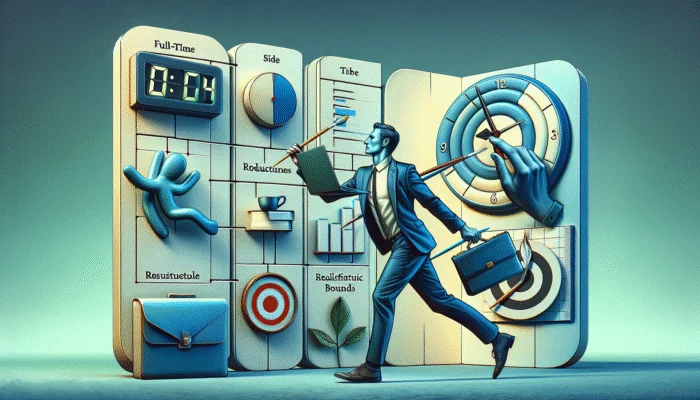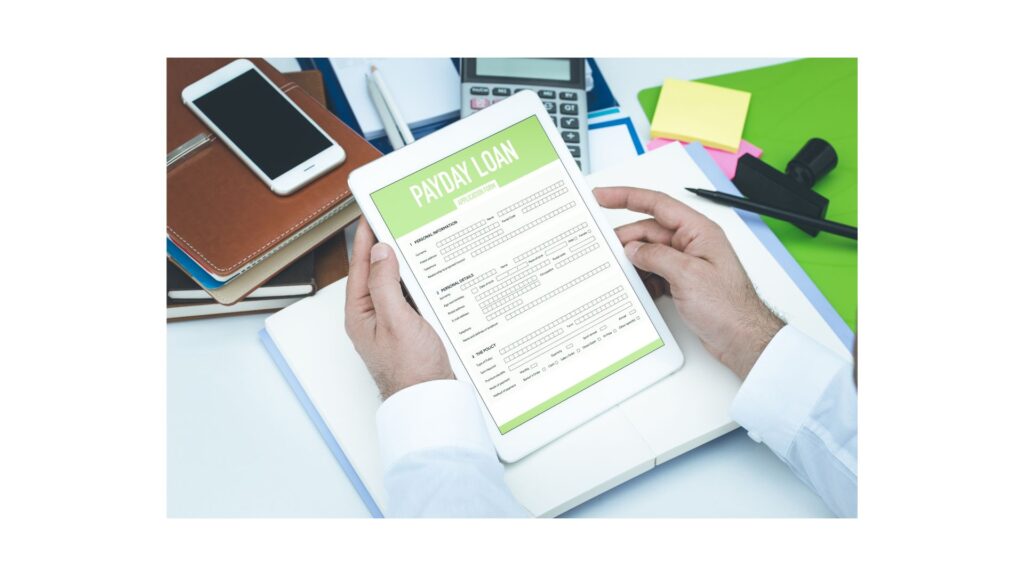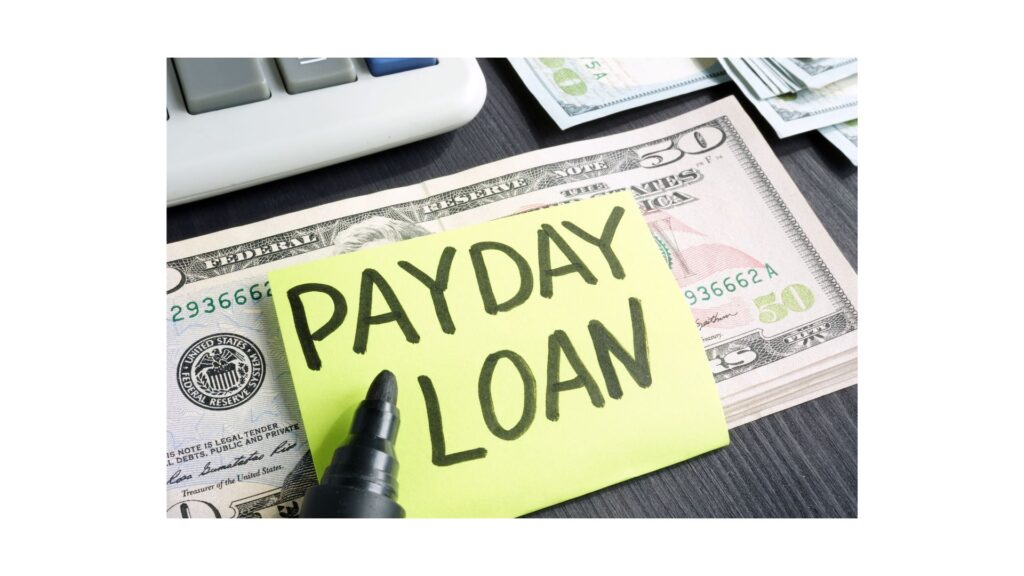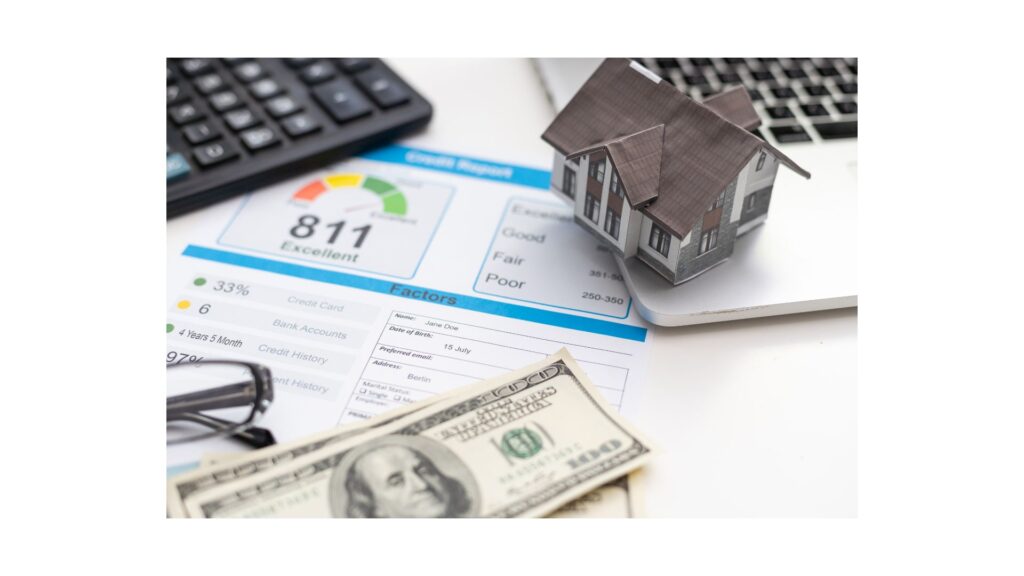Key Takeaways
- Popular side hustles: Common options in the US include ride-sharing, freelancing, tutoring, and delivery services.
- Earnings potential: Side hustle income varies widely, with drivers earning $15 to $25 per hour and freelancers charging $15 to $100.
- Time management: Balancing a side hustle with a full-time job requires effective scheduling and prioritization to avoid burnout.
- Debt repayment strategies: Financial experts recommend focused repayment methods like the debt snowball and avalanche to tackle payday loans effectively.
Choosing the Right Side Hustle

What Are Popular Side Hustles in the US?
Determining the right side hustle requires an understanding of what options are available and how they align with your skills and schedule. Popular side hustles in the United States include a variety of opportunities that cater to different interests and abilities. Some of the most sought-after options include:
- ride-sharing (e.g., Uber, Lyft)
- Freelancing (writing, graphic design, programming)
- Tutoring (academic subjects, music lessons)
- Pet sitting or dog walking
- Delivery services (food delivery, package delivery)
- Online surveys and market research
- Handyman services
- Virtual assistant work
Exploring these avenues can yield substantial earnings while allowing flexibility. The ideal side hustle should complement your existing job and fit your skills, whether it’s driving, teaching, or providing services. Assess your availability and think about what you enjoy; this will foster greater commitment and sustainability in your side hustle journey.
How Much Can You Earn from Different Side Hustles?
The potential earnings from side hustles in the United States vary significantly based on several factors, including type of work, location, and the amount of time you’re willing to invest. For instance, ride-sharing drivers can earn between $15 to $25 per hour, while freelancers may charge anywhere from $15 to $100 per hour depending on their expertise. The flexibility of side hustles allows you to work as much or as little as you desire, leading to varying incomes.
Researching local market rates is essential for setting realistic expectations. For example, tutoring rates might differ widely, ranging from $20 to $75 per hour based on your subject expertise and geographic area. Additionally, you can leverage platforms like Upwork or Fiverr to gauge freelance rates. Always keep in mind the time you can realistically dedicate to the side hustle; this will help in calculating potential earnings accurately.
Balancing Side Hustle and Full-Time Job

Effective time management is paramount when balancing a side hustle with a full-time position. To avoid burnout and ensure productivity, prioritize your tasks and establish clear boundaries between your full-time job and your side hustle. Create a structured schedule that allocates specific hours for work on your side hustle.
Using tools like Google Calendar or project management apps can significantly enhance your ability to stay organized. Set realistic goals for both your primary job and side hustle, ensuring that neither suffers from your time commitments. Communication with your main employer may also help; if they’re aware of your additional responsibilities, they may offer more flexibility.
Regularly reassessing your workload helps maintain the balance. If you find the side hustle is taking too much time or affecting your job performance, consider scaling back or adjusting your workload to ensure both areas thrive.
Expert Insights on How to Pay Off Payday Loans with a Side Hustle
What Strategies Do Financial Experts Recommend?
Financial experts widely recommend several strategies for paying off payday loans through the leverage of a side hustle. First and foremost is the importance of prioritizing high-interest debt, such as payday loans, which typically come with exorbitant interest rates. Create a structured budget that allows you to allocate a specific portion of your side hustle income towards these loans, thus accelerating your repayment process.
Real-world examples of successful debt repayment strategies often illustrate the effectiveness of the debt snowball method, where smaller debts are paid off first to build momentum, or the debt avalanche method, which focuses on the highest interest debts first. Whichever method you choose, consistency and commitment are key. Financial experts underscore the necessity of automating payments whenever possible to prevent late fees and additional interest.
Another recommended approach is to create an emergency budget that trims unnecessary expenses, allowing you to funnel more money into debt repayment. For example, if you earn an extra $300 a month through a side hustle, setting aside a significant portion of it towards your payday loan can dramatically reduce the overall time spent in debt.
How Can You Stay Motivated Throughout the Process?

Staying motivated while paying off payday loans can be challenging. One effective strategy is to establish small, achievable goals that lead to your larger objective. Celebrate each milestone, whether it’s paying off your first loan, reducing your total debt by a certain percentage, or reaching a specific savings goal. Recognizing these small wins keeps your momentum going and enhances your commitment to the process.
Expert analysis often emphasizes the importance of visual reminders of your progress. Create a debt repayment chart or use apps that allow you to visually track your progress. This can serve as a constant reminder of your journey and spur you on, especially during challenging times. Also, engage with communities—be it online forums or local support groups—where you can share your experiences and learn from others who are on a similar path.
Accountability partners can also be beneficial. Share your goals with friends or family who can check in with you and provide encouragement. Maintaining a positive mindset is crucial; remind yourself of the long-term benefits of being debt-free, which can ultimately enhance your financial well-being and reduce stress.
What Are Common Pitfalls to Avoid?
Navigating the journey of paying off payday loans while maintaining a side hustle comes with its own set of potential pitfalls. One of the most common issues is taking on too much too quickly, which can lead to overwhelming stress and burnout. It’s vital to know your limits—both financially and emotionally.
Another prevalent pitfall is neglecting to save money. While it may seem necessary to put every extra penny towards debt repayment, having no savings can lead to future reliance on payday loans in case of unexpected expenses. Establish a modest savings goal alongside your debt repayment plan to create a financial safety net.
Tracking your progress is also crucial. Many individuals fail to monitor their financial journey, which can lead to complacency and unawareness of their actual financial situation. Regularly reviewing your budget and debt repayment strategy helps in adjusting your plan as needed and staying on target. Consider utilizing budgeting tools like Mint or YNAB to assist with tracking your income and expenses effectively.
Budgeting and Financial Planning
How to Create a Budget That Includes Your Side Hustle Income?
Creating an effective budget that incorporates your side hustle income is essential for achieving financial stability and ensuring that debts are paid down efficiently. Begin by listing all of your sources of income, including your full-time job and your side hustle earnings. This comprehensive view of your financial situation will help you allocate resources more effectively.
Next, categorize your expenses into fixed costs (like rent and utilities) and variable costs (like groceries and entertainment). By understanding where your money is going, you can identify areas where you can cut back. Tools such as budgeting apps or spreadsheets can simplify this process, allowing for easy tracking of income and expenses.
Once you have a clear picture of your income and expenses, set specific financial goals. Allocate a portion of your side hustle income directly towards debt repayment, while also ensuring you set aside funds for savings. This dual approach not only helps in paying off payday loans but also prepares you for any unforeseen expenses in the future. Adjust your budget regularly based on changes in your side hustle income; flexibility is key to effective financial planning.
What Are Effective Debt Repayment Strategies?
When it comes to paying off payday loans, employing effective debt repayment strategies is crucial for success. The two most popular methods are the debt snowball and debt avalanche techniques. The debt snowball method involves paying off smaller debts first, which can provide a psychological boost as you see debts disappearing quickly. This method is particularly effective for those who thrive on motivation and need small wins to stay engaged in the process.
On the other hand, the debt avalanche method focuses on paying off debts with the highest interest rates first. This approach saves more money over time and can be mathematically superior. Choosing the right method depends on your financial behavior—if you need quick wins, go for the snowball; if you’re motivated by saving money, consider the avalanche method.
Additionally, consider the impact of your side hustle on your debt repayment. Funnel extra income from your side hustle into your chosen repayment strategy. Consistency is vital; making additional payments as soon as you earn funds from your side hustle can accelerate your debt payoff timeline. Experts recommend reviewing your strategies periodically and adjusting them as necessary based on progress and changes in income or expenses.
How to Track Your Progress and Adjust Your Plan?
Tracking your progress in paying off payday loans is vital to staying on track with your financial goals. Regularly review your budget and debt repayment plan to see how your efforts are translating into results. Utilize financial applications or spreadsheets, which can provide insights into how much you have paid down, how much remains, and the timeline for completing your repayment.
As you assess your progress, be open to adjusting your plan based on income fluctuations or unexpected expenses. If you find that your side hustle income has increased, consider allocating a larger portion towards your debt repayment. Conversely, if you experience a decrease, you may need to reevaluate your budget and consider ways to cut back on non-essential expenses.
Key tracking tools that can assist you include budgeting apps like Mint, YNAB, and Personal Capital. These platforms can automate many tracking processes, providing a clearer picture of your financial landscape. Regular reflection on your progress not only helps in maintaining motivation but also ensures that you remain agile in your financial planning.
Negotiating with Payday Loan Lenders
What Are Your Rights When Dealing with Payday Lenders?
When dealing with payday lenders, it’s essential to understand your rights to effectively negotiate and manage your loans. Under the Truth in Lending Act, lenders are required to provide clear information about the terms of your loan, including the annual percentage rate (APR) and total repayment amount. Familiarizing yourself with these terms can empower you during negotiations.
Additionally, each state has its own regulations governing payday lending practices. Knowing these laws helps you understand what lenders can and cannot do, including limits on fees and interest rates. This knowledge can be instrumental when negotiating for better terms or when seeking to resolve any disputes that may arise during the repayment process.
Armed with this knowledge, approach negotiations with professionalism and persistence. If you find yourself in a position where you cannot meet the repayment terms, communicate openly with your lender to discuss potential solutions. Many lenders may be willing to work with you, especially if you can demonstrate your commitment to repaying the loan.
How Can You Negotiate Lower Interest Rates or Fees?
Negotiating lower interest rates or fees with payday lenders is a critical step in managing your debt more effectively. Preparation is key—prior to approaching your lender, gather all relevant documentation about your loan, including the original loan agreement, payment history, and current status. Develop a clear repayment plan showcasing your commitment to paying off the debt.
When initiating a negotiation, maintain a professional demeanor, and clearly articulate your request. Express your willingness to pay off the loan but explain the challenges posed by the current interest rates or fees. Propose a reasonable counter-offer that aligns with your repayment capabilities.
Persistence is essential; don’t hesitate to follow up if the lender is slow to respond. If the lender is unwilling to negotiate, consider seeking assistance from a credit counselor, who can provide guidance and may help facilitate negotiations on your behalf. Additionally, remember that if negotiations fail, you have other resources available, such as legal assistance or financial literacy programs that can provide additional support.
What to Do If a Lender Refuses to Negotiate?
If a lender refuses to negotiate, there are several steps you can take to address the situation effectively. First, don’t panic; instead, explore other avenues for support. Seeking assistance from a credit counselor can be beneficial. These professionals specialize in managing debt and can help you create a comprehensive repayment plan or advocate on your behalf with lenders.
Additionally, consider looking into legal resources available for consumers facing challenges with payday loans. Many states have consumer protection agencies that provide guidance on rights regarding lending practices, and they may advocate on your behalf if necessary.
If all else fails, explore alternative options such as personal loans from banks or credit unions, which typically have lower interest rates than payday loans. You might also consider consolidating your loans, allowing you to combine multiple debts into a single payment with potentially more favorable terms. Remember, your financial stability is paramount; exploring multiple options can eventually lead to a resolution that eases your repayment burden.
- National Foundation for Credit Counseling
- Consumer Financial Protection Bureau
- Local legal aid services
- State consumer protection agency
Research-Backed Benefits of How to Pay Off Payday Loans with a Side Hustle
What Are the Psychological Benefits of Debt Repayment?
Paying off debt, particularly high-interest payday loans, carries substantial psychological benefits that can enhance your overall well-being. Many individuals experience relief and reduced anxiety when they see their debts decreasing, reflecting a decline in financial stress. Studies have shown that achieving financial stability correlates with improved mental health and a greater sense of control over one’s life.
Additional benefits include a boost in self-esteem and confidence as you take proactive steps to manage your finances. The process of setting and achieving financial goals fosters a sense of accomplishment, which can positively influence other areas of your life. For instance, once you start seeing progress in debt repayment, you may feel inspired to tackle other challenges, whether personal or professional.
Moreover, as you pay off debts, the release of financial burdens can lead to improved relationships, as financial stress is a common strain on partnerships. Ultimately, the journey of debt repayment can be transformative, instilling a sense of empowerment and resilience that extends beyond mere financial matters.
How Does Reducing Debt Impact Your Credit Score?
Paying off payday loans can significantly improve your credit score by positively impacting your debt-to-income ratio and payment history, two critical components of credit scoring. As you reduce outstanding debts, your credit utilization decreases, which is a key factor considered by lenders when evaluating your creditworthiness.
Moreover, consistently making payments on time and reducing overall debt balances contribute to a robust payment history, which reflects responsible financial behavior. This cumulative effect can lead to an increase in your credit score over time, opening doors to better loan terms and interest rates for future financial endeavors.
Real-world examples illustrate the profound impact of reducing debt on credit scores. Individuals who actively pay off payday loans often report increases in their credit scores within months, allowing them to qualify for lower mortgage rates or better credit card options. Focusing on maintaining a good credit score not only aids in current financial recovery but also sets a foundation for future financial success.
What Long-Term Financial Benefits Can You Expect?
The long-term benefits of paying off payday loans extend far beyond simply alleviating immediate financial pressure. Successfully managing and eliminating debt can lead to increased savings, improved credit terms, and enhanced financial stability over time. One of the most significant advantages is the ability to redirect funds that were previously allocated to debt repayment into savings and investments.
As you achieve financial stability, you may find that your stress levels decrease, allowing for a more balanced lifestyle and the ability to pursue new opportunities, such as buying a home or investing in education. Additionally, with a stronger credit score, loan approvals become easier, and interest rates are more favorable, ensuring that future borrowing—if necessary—comes with less financial strain.
Expert analysis emphasizes the importance of long-term financial planning as well. By developing healthy saving habits and investing wisely once debts are cleared, individuals can create a path toward financial independence and security. The lessons learned from managing debt can lead to more informed financial decisions in the future, promoting sustained economic well-being.
How Can a Side Hustle Accelerate Debt Repayment?
A side hustle can serve as a powerful tool to accelerate debt repayment, particularly for high-interest payday loans. By increasing your overall income, you create additional resources that can be directed towards paying off your debts faster. For example, if you establish a side hustle that nets you an extra $500 a month, allocating that income directly towards your payday loans can significantly shorten your repayment timeline.
Strategically utilizing side hustle income can also provide flexibility in your budgeting. It allows you to prioritize high-interest debts while simultaneously setting aside funds for an emergency fund, thus preventing future reliance on payday loans. Maintaining a disciplined approach to using side hustle earnings can create a snowball effect; as debts decrease, the amount you can allocate towards savings and investments increases.
Moreover, a side hustle can provide opportunities for personal growth and skill enhancement, often leading to better job prospects in the future. For instance, a freelance writing gig can refine your writing skills, making you more competitive in your primary profession. The benefits of a side hustle extend beyond immediate financial gain; they can pave the way for long-term professional and financial success.
Building an Emergency Fund
Why Is an Emergency Fund Important?
Establishing an emergency fund is crucial for maintaining financial health and preventing future reliance on payday loans. An emergency fund acts as a financial safety net, providing resources for unexpected expenses such as medical emergencies, car repairs, or job loss. Without this cushion, individuals may find themselves resorting to payday loans during times of crisis, perpetuating a cycle of debt.
The peace of mind that comes with having savings set aside is immeasurable. Knowing that you have funds available for emergencies can alleviate stress and allow for better decision-making in times of need. Moreover, an emergency fund fosters financial discipline; it encourages you to prioritize savings and plan for the future rather than reacting in desperation to unforeseen circumstances.
Creating an emergency fund may initially seem daunting, but starting small can lead to significant results over time. As you pay off debt and increase your income through a side hustle, gradually building your fund becomes a manageable goal, ensuring financial resilience in the face of life’s uncertainties.
How Much Should You Save in Your Emergency Fund?
Experts recommend that individuals save between three to six months’ worth of living expenses in their emergency fund. This range provides a solid foundation for navigating unforeseen financial challenges without resorting to high-interest loans. The exact amount you should aim for depends on your personal circumstances, such as job stability, monthly expenses, and financial obligations.
To determine your target savings amount, calculate your essential monthly expenses, including rent or mortgage, utilities, groceries, and transportation. Multiply this total by the desired number of months you wish to cover. For example, if your monthly expenses total $3,000, aim for a fund of $9,000 to $18,000.
Adjust your savings goals based on your situation. If you work in a volatile industry or have dependents, leaning toward the six-month guideline can provide additional security. Regularly reassessing your emergency fund needs ensures that your savings remain relevant and sufficient as your life circumstances change.
What Are Strategies for Building an Emergency Fund Quickly?
Building an emergency fund quickly requires a strategic approach to saving and spending. Start by cutting unnecessary expenses from your budget. Review your discretionary spending, identifying areas where you can reduce costs, such as dining out, subscription services, or entertainment. Direct these savings towards your emergency fund.
Another effective strategy is to leverage your side hustle. Channel a specific percentage of your side hustle income directly into your emergency fund before allocating any earnings elsewhere. Consider automating your savings by setting up a separate account where funds can be transferred automatically each month.
Additionally, seek quick ways to boost your income. This might include taking on extra shifts at your full-time job, offering freelance services, or selling items you no longer need. Every dollar counts; even small amounts saved can add up over time, accelerating your path toward a fully funded emergency account.
- Cut discretionary spending
- Leverage side hustle income
- Automate savings transfers
- Sell unused items for extra cash
Where Should You Keep Your Emergency Fund?
Choosing the right account for your emergency fund is vital for ensuring easy access and potential growth. A high-yield savings account or a money market account is ideal, as these options typically offer better interest rates than traditional savings accounts while maintaining liquidity.
High-yield savings accounts often provide competitive interest rates, allowing your emergency fund to grow over time without sacrificing accessibility. Make sure that the account you choose allows for quick withdrawals, as you want to be able to access your funds in case of emergencies without delays or complications.
Additionally, consider accounts that are FDIC-insured, providing protection for your savings up to $250,000. This safety net ensures that your emergency fund remains secure while still earning interest. Regularly review and compare interest rates to ensure that your emergency fund continues to work for you, maximizing your savings potential.
Maintaining Financial Health After Payday Loan Repayment
How to Avoid Future Payday Loan Dependency?
Avoiding future dependency on payday loans requires a multi-faceted approach focused on building a solid financial foundation. Start by ensuring that you have an adequate emergency fund in place to handle unexpected expenses without resorting to high-interest loans. This financial cushion is essential for promoting long-term stability.
Improving your credit score also plays a crucial role. By practicing healthy financial habits, such as making timely payments and reducing debt, you can cultivate a strong credit history. A robust credit score allows you access to more favorable loan options, reducing the likelihood of needing payday loans in the future.
Lastly, educate yourself about alternative financing options. Having a clear understanding of other borrowing alternatives, like personal loans from credit unions or community banks, can provide safer options when you need financial support. Engaging in continuous financial education helps instill good money management practices, empowering you to make informed decisions.
What Are Healthy Financial Habits to Develop?
Developing healthy financial habits is essential for maintaining financial well-being after paying off payday loans. Start by establishing a regular budgeting routine. This involves tracking your income and expenses diligently, allowing you to understand your financial landscape and make informed spending decisions.
Additionally, prioritize saving a portion of your income. Aim to save at least 20% of your monthly earnings for future goals, such as retirement or major purchases. Regular contributions to savings and investment accounts can contribute to long-term financial security.
Continuous financial education is another critical habit. Stay informed about personal finance topics, investment opportunities, and strategies for debt management. Attend workshops, read books, or follow reputable financial blogs to sharpen your skills. These practices cultivate a mindset of financial responsibility and prepare you for a secure financial future.
How to Continue Growing Your Side Hustle?
Continuing to grow your side hustle is essential for increasing your income and further cementing your financial stability. Start by reinvesting profits back into your side hustle. Whether this means purchasing new equipment, enhancing your marketing efforts, or furthering your education, these investments can lead to greater returns over time.
Expanding your skill set can also open new avenues for income. Take courses or workshops relevant to your side hustle to enhance your expertise and increase your service offerings. This not only makes you more competitive but can also lead to higher-paying opportunities.
Lastly, explore new income streams related to your current side hustle. For instance, if you’re a freelancer, you might consider teaching workshops or creating online courses. Diversifying your income sources not only enhances your earning potential but also provides a safety net to protect against fluctuations in any single income stream.
FAQs
What is a payday loan?
A payday loan is a short-term borrowing option that typically requires repayment on your next payday. These loans are known for high-interest rates and fees, often leading borrowers into a cycle of debt.
How can a side hustle help pay off payday loans?
A side hustle provides additional income, allowing you to allocate more funds toward paying off payday loans. This extra money can significantly reduce the time it takes to become debt-free.
What are common side hustles in the US?
Common side hustles in the US include ride-sharing (Uber, Lyft), freelancing (writing, graphic design), tutoring, pet sitting, and delivery services. These options cater to various skills and schedules.
How much should I save in my emergency fund?
Experts recommend saving 3-6 months’ worth of living expenses in your emergency fund. The exact amount may vary depending on your personal circumstances and job stability.
What are effective debt repayment strategies?
Effective debt repayment strategies include the debt snowball and debt avalanche methods. Choose one that aligns with your financial goals and offers the most motivation for you.
How can I negotiate with payday lenders?
Negotiating with payday lenders involves understanding your loan terms and preparing a clear repayment plan. Approach the lender professionally and persistently to discuss lower interest rates or fees.
What are my rights when dealing with payday lenders?
Under the Truth in Lending Act, you have the right to clear information about loan terms. Each state also has regulations protecting you from excessive fees and interest rates.
Why is maintaining financial health important after paying off payday loans?
Maintaining financial health after paying off payday loans helps prevent future reliance on high-interest loans. It promotes stability and empowers you to make informed financial decisions.
How can I stay motivated while paying off debt?
Staying motivated involves setting small, achievable goals and celebrating milestones. Visual reminders of your progress and engaging with supportive communities can also help keep motivation high.
What should I do if a lender refuses to negotiate?
If a lender refuses to negotiate, consider seeking assistance from a credit counselor or legal resources. Exploring alternative financing options can also provide solutions for managing your debt.

A Mississippi-based financial consultant with over a decade of experience in personal finance and payday lending. Originally from Jackson, he holds certifications in financial planning and credit advisory. Passionate about helping everyday Americans make smarter borrowing decisions, he focuses on guiding people away from common debt traps while promoting healthy financial habits. His expertise bridges the gap between short-term loan needs and long-term money management strategies. Outside of work, he volunteers with local programs that promote financial literacy across Mississippi.





This post really highlights the diverse range of side hustles available today, which is a reflection of our evolving work culture. As someone who has dipped my toes into freelancing and tutoring, I’ve found that flexibility is key. Each side hustle not only helps financially but also enhances my skills in unexpected ways, like improving my time management and communication.